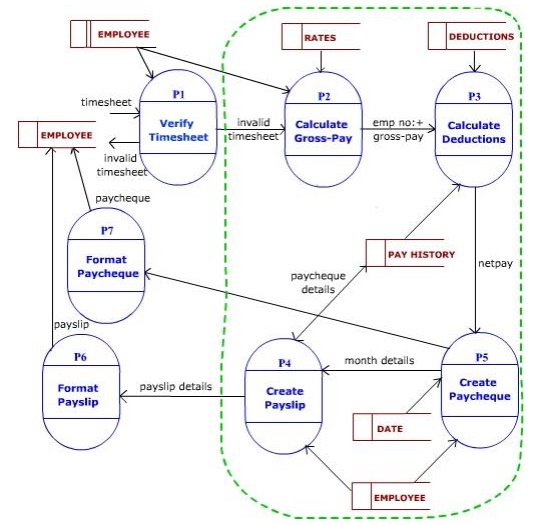Rapid Application Development (RAD)
As the name suggests Rapid
Application Development (RAD) model is an incremental
software process model that
focuses on short development cycle time. This model is a “high-speed” model
which adapts many steps from waterfall model in which rapid development is
achieved by using component based construction approach.
In case if project requirements are well understood and project
scope is well known
then RAD process enables a development team to create a fully functional system
i.e. software product within a very
short time period may be in days.
RAD model is like other process models maps into the common and major framework
activities.
Phases of RAD
Model
Communication is an activity which works to understand the business problem and
the information characteristics that should be accommodate by the software.
In RAD model Planning is required because numerous software
teams works in parallel on different system
functions.
Modelling includes 3 major phases –
1.
Business modeling
2.
Data modeling
3.
Process modeling
Construction focuses mainly on the use of existing software components and the application of automatic code
generation.
Deployment establishes a basis for subsequent iterations if necessary.
A business application which can be modularize in a way that
allows each major function to be completed in less than three months is useful
for RAD. Each major function can be addressed individually by a separate RAD
and then integrated to form a whole application.
Diagram of RAD Model
Advantages of RAD Model
1. Flexible and
adaptable to changes.
2. Prototyping
applications gives users a tangible description from
which to judge whether critical system requirements are being met by the
system. Report output can be compared with existing reports. Data entry forms
can be reviewed for completeness of all fields, navigation, data access (drop
down lists, check-boxes, radio buttons,
etc.).
3. RAD generally
incorporates short development cycles – users see the RAD product quickly.
4. RAD involves
user participation
thereby increasing
chances of early user community acceptance.
5. RAD realizes an
overall reduction in project risk.
6. Pareto’s 80 – 20
Rule usually results in reducing the costs to create a custom system.
Disadvantages of RAD Model
1. Unknown cost of
product. As mentioned above, this problem can be alleviated by the customer
agreeing to a limited amount of rework in the RAD process.
2. It may be
difficult for many important users to commit the time required for success of
the RAD process.
Drawbacks of RAD Model
1.
RAD requires sufficient
human resources to create the right number of RAD teams
2.
If developers and customers
are not committed to the rapid, rapid-fire
activities necessary to complete the system in a much abbreviated time frame,
RAD projects will fail.
3.
For RAD system should be
properly modularize otherwise it creates lots of problems to the
RAD model.
4.
Rad approach does not work
properly if high performance is a major issue, and performance is to be
achieved through tuning the interface to system components.
5.
When technical risks are
high RAD may not be a suitable option. This may be possible while an
application heavy uses a new technology.
When to use RAD model:
§ RAD should be used when there is a need to create a
system that can be modularized in 2-3 months of time.
§ It should be used if there’s high availability of
designers for modeling and the budget is high enough to afford their cost along
with the cost of automated code generating tools.
§ RAD SDLC
model should be chosen
only if resources with high business knowledge are available and there is a
need to produce the system in a short span of time (2-3 months).







